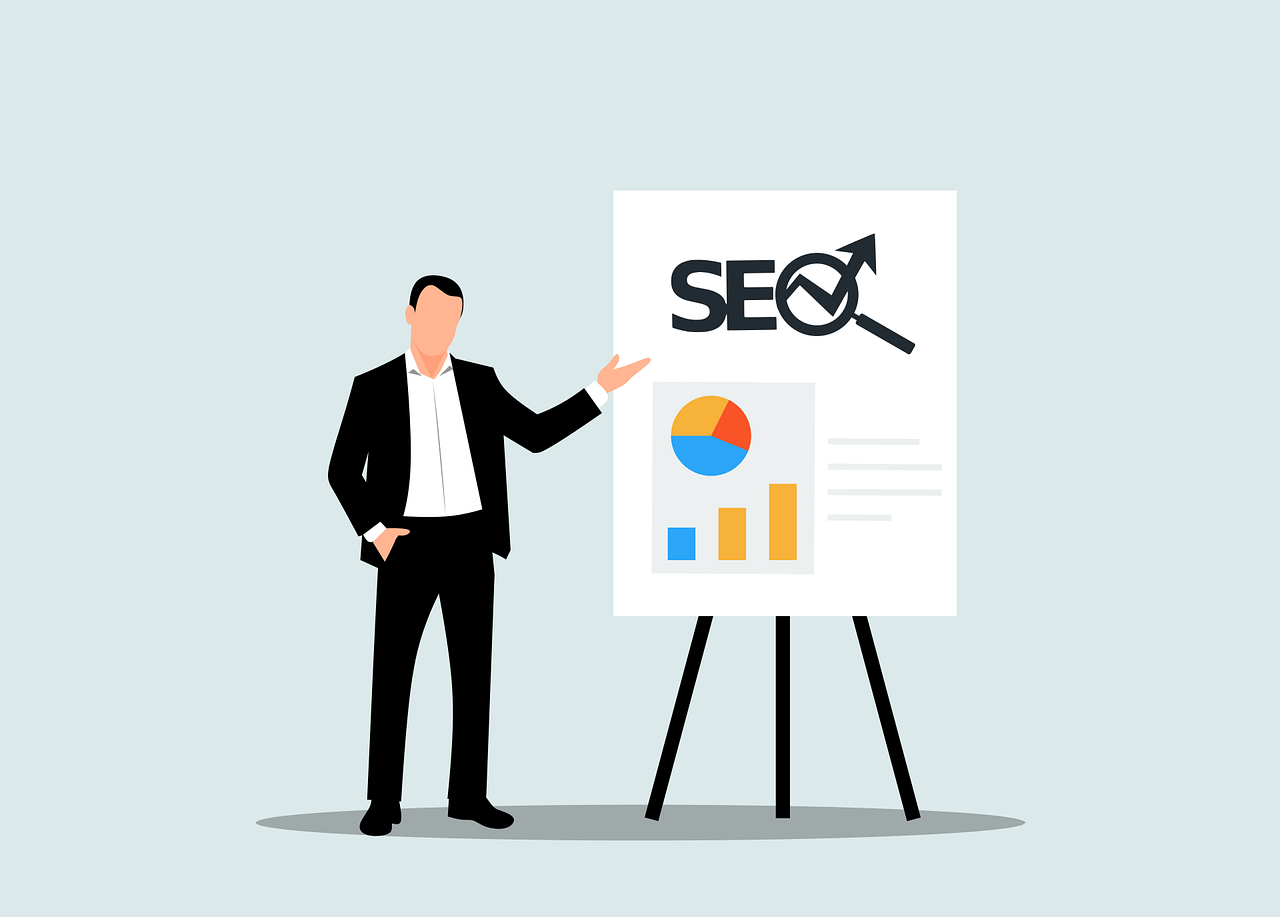The Significance of E-commerce SEO
In the fiercely competitive world of e-commerce, having a stunning online store is just the beginning. To succeed, you must ensure that your target audience can find your products amidst the digital clutter. This is where E-commerce SEO (Search Engine Optimization) comes into play. In this guide, we talk about E-commerce SEO strategies that can significantly enhance the visibility of your online store, outrank competitors, and ultimately drive more qualified traffic and sales.
The E-commerce Boom
E-commerce has experienced explosive growth, especially in recent years. With countless online stores vying for consumer attention, standing out has become increasingly challenging. Effective E-commerce SEO is the key to ensuring your online store is not lost in the vast online marketplace.
The Power of Organic Traffic
Organic traffic, generated through search engine results, is often the most valuable traffic for e-commerce businesses. It’s cost-effective, highly targeted, and has the potential to yield significant ROI (Return on Investment). E-commerce SEO is the process of optimizing your online store to rank higher in search engine results, making it crucial for driving organic traffic.
Advanced E-commerce SEO Strategies
Comprehensive Keyword Research
While basic keyword research is essential, advanced E-commerce SEO goes deeper. Invest time in identifying long-tail keywords specific to your products. These keywords often have lower competition and can attract highly motivated buyers. Utilize keyword research tools to uncover these hidden gems and incorporate them strategically into your product listings and content.
Optimize Product Pages
Each product page on your e-commerce website should be a well-optimized landing page. Craft compelling product descriptions that not only describe the features but also address the benefits and unique selling points. Use high-quality images and videos to showcase the product from different angles. Optimize product titles, meta descriptions, and header tags to align with targeted keywords.
User Experience and Site Speed
Google takes user experience seriously. Ensure your website is mobile-responsive, as mobile-friendliness is a ranking factor. Improve site speed by compressing images, using browser caching, and minimizing HTTP requests. A fast-loading website not only pleases search engines but also reduces bounce rates, improving user experience.
Schema Markup for Products
Implement schema markup (structured data) to provide search engines with specific information about your products. This can result in rich snippets in search results, displaying product ratings, prices, and availability. Rich snippets can significantly boost click-through rates and visibility.
Voice Search Optimization
Voice search is on the rise, with more and more users relying on voice-activated devices like Siri, Alexa, and Google Assistant to make online purchases. To tap into this growing trend, optimize your product listings for voice search queries. Use natural language and conversational keywords that people are likely to use when speaking aloud. Consider creating an FAQ section on your product pages to address common voice search questions.
International SEO Expansion
If you’re targeting global markets, international SEO is essential. Create localized versions of your website for different regions and languages. Use hreflang tags to indicate language and regional targeting to search engines. Research and implement international keywords to ensure your products rank well in various countries. Additionally, consider setting up local backlinks and citations in each target market to improve local SEO.
Video SEO for Product Demonstrations
Videos are a powerful tool for showcasing your products in action. Create high-quality product demonstration videos and optimize them for SEO. Use descriptive video titles, detailed video descriptions, and relevant tags. Embed these videos on your product pages to engage visitors and improve conversion rates. Video content can also rank in search results, expanding your online visibility.
Advanced Link Building
Link building remains a critical aspect of E-commerce SEO, but it’s essential to focus on quality over quantity. Seek opportunities for high-authority backlinks from reputable sources in your industry. Collaborate with influencers and industry experts to create content and gain exposure. Additionally, consider broken link building, where you identify broken links on other websites and offer your content as a replacement.
Content Marketing for E-commerce SEO
Blogging for E-commerce
While product pages are essential, a blog can be a powerful asset for E-commerce SEO. Create informative and engaging blog content related to your products, industry trends, how-to guides, and customer stories. This not only attracts organic traffic but also positions your online store as an authority in your niche.
User-Generated Content
Encourage customers to leave reviews and ratings on your product pages. User-generated content not only adds credibility but also provides fresh, keyword-rich content that can improve SEO. Respond to reviews promptly, showing your commitment to customer satisfaction.
Content Promotion and Outreach
Creating great content is only half the battle; promoting it effectively is the other. Develop a content promotion strategy that includes outreach to influencers, sharing on social media, and email marketing. Engage with your audience by responding to comments and encouraging discussions around your content. The more your content is shared and discussed, the better it performs in search results.
Content Syndication
Consider syndicating your content on reputable industry websites and platforms. Guest posting on relevant blogs and publications can expand your reach and attract a broader audience. Ensure that these platforms allow backlinks to your e-commerce site, providing valuable link juice and referral traffic.
Technical SEO for E-commerce
Site Architecture
Organize your website logically with clear navigation. Create categories and subcategories that make it easy for users to find products. Implement breadcrumb navigation to enhance user experience and assist search engines in understanding your site’s structure.
XML Sitemaps and Robots.txt
Submit XML sitemaps to search engines to ensure all your product pages are indexed. Use a robots.txt file to block search engine bots from crawling duplicate or irrelevant content. Properly configured, these tools can optimize how search engines crawl and index your site.
Secure and Mobile-Friendly Website
Ensure your website has an SSL certificate to secure customer data and boost search engine rankings. Additionally, prioritize mobile-friendliness as Google gives preference to mobile-responsive sites, especially in mobile search results.
Mobile-First Indexing
Google now primarily uses the mobile version of websites for indexing and ranking. Ensure that your website is not only mobile-responsive but also offers a seamless user experience on mobile devices. Optimize images and scripts to reduce load times on mobile, and use Google’s Mobile-Friendly Test tool to ensure compliance.
HTTPS and Security
Website security is not just important for protecting customer data; it also impacts SEO. Google favors secure websites with HTTPS encryption. Ensure that your entire website, including product pages and checkout, is secured with HTTPS. Regularly update your SSL certificate to maintain security.
Monitoring and Analytics
Regular SEO Audits
Perform regular SEO audits to identify areas for improvement. Check for broken links, duplicate content, and technical issues. Analyze your competitors’ strategies and adapt accordingly.
Advanced Analytics
Utilize advanced analytics tools to track the performance of your e-commerce SEO efforts. Measure organic traffic, conversion rates, and revenue generated from organic search. This data provides valuable insights for refining your SEO strategy.
Conversion Rate Optimization (CRO)
While E-commerce SEO focuses on driving traffic, it’s equally important to optimize your website for conversions. Conduct A/B tests to improve product page layouts, calls to action, and checkout processes. Monitor your conversion rates closely and make data-driven adjustments to enhance user experience and increase sales.
Competitive Analysis
Keep a close eye on your competitors in the e-commerce space. Analyze their SEO strategies, content, and backlink profiles. Identify gaps and opportunities where you can outperform them. Tools like SEMrush and Ahrefs can provide valuable insights into your competitors’ online presence.
Achieving E-commerce Excellence Through Advanced SEO
Advanced E-commerce SEO is an ongoing journey that requires a combination of strategies and continuous adaptation to stay ahead of the competition. By embracing comprehensive keyword research, optimizing product pages, enhancing user experience, and excelling in technical SEO, you can significantly boost your online store’s visibility.
Content marketing, including blogging, user-generated content, and video SEO, plays a pivotal role in engaging your audience and expanding your reach. Additionally, a strong focus on technical aspects like site architecture, mobile-friendliness, and security is essential for both search engine rankings and user satisfaction.
Monitoring and analytics provide the critical feedback loop necessary for continuous improvement. Regular SEO audits, advanced analytics, conversion rate optimization, and competitive analysis are essential components of a successful E-commerce SEO strategy.
By following these advanced E-commerce SEO strategies and maintaining a commitment to excellence, your online store can attract more qualified traffic, outrank competitors, and achieve higher levels of success in the ever-evolving world of e-commerce. Remember that SEO is a long-term investment, and consistent effort will yield substantial rewards for your business.





